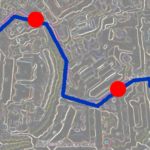We discuss the following topics in this blog:
- Technology as the enabler for digital transformations.
- A shift in Telcos’ behaviour
- Cloud-Native to become the de facto standard
In addition to these topics, we shall also be answering the following FAQs:
- What is WiFi?
- What is Open RAN?
Contents
Overview
The ‘digital transformation’ which was on a massive roll across almost all industries, has just accelerated. And what has changed as dramatically as the technology itself, especially in the communication industry, is the assumption, about the network, its architecture, the applications, the organizational structure, about who the customer is, what they would be possibly consuming as services, who are the partners and who are the competitors. Technology, unlike what many quote is not a disruptor, rather exactly the opposite. It is the enabler for designing the new goals for digital transformations. As the rules of the games are changing the new emerging business models are blending the boundaries between what were considered as different verticals.

Is the Era of Collaboration Taking Over?
The era of ‘disruption’ is getting over and the times of ‘collaboration’ is on the rise. One of the main reasons that the Tier 1 and mid-size Tier 2 CSPs find it difficult to embrace the new tech is because of their big investment in the last couple of years on yesterday’s technology. However, the good part is the new technology is not as CAPEX intensive as perceived, it is way faster and easier to deploy and use. There is a fundamental shift in the way these CSPs need to ‘behave’ – from being a communication service provider to being a high-tech software company is the key.
The mode of developing products and services and then creating the needed market is a legacy way of working, now the CSPs must deliver their core services in conjunction with partners who understand the specific needs of the sector they operate in – entertainment, education, health care, automakers, etc. While the tapestry for digital connectivity in most cases will be laid by the CSPs, the business will be brought in only by partnership and collaboration. The recent mergers in the telco industries from very different verticals is testimony to what could happen going ahead.
The ability to create innovative offerings that connect the core telco offerings with entertainment package, with restaurant or transport options or the music people listen to, or the books they read or the places they visit or the education they would like to take would be the only way to work. It may not be an optional move in coming times, it would be more of a way of operating. Becoming the ‘Digital Lifestyle Provider’ rather than a ‘Communication service Provider’ is the necessary shift the industry will witness.
What Will be the Architectural Shifts in This Transition?
Though moving to this new CSP avatar, will have its set of challenges, unless a complete unison of Platform, Processes and People have not been thought through. Complex BSS/OSS solutions will morph into simpler lightweight, cloud-native microservices. As Cloud Native will become the de-facto standard, the infrastructure and the applications will be completely disaggregated and might be provided by different vendors. There will be many architectural shifts on multiple levels, however few things, as mentioned below will emerge as common practices.
Collaboration Platform: A platform where different partners can latch-on seamlessly to enable them to integrate their specialized product catalogue and be part of the unified product catalogue of the CSP (or DSP). This allows the CSPs to combine products across different partners, its own core products and bundle innovative data driven products for their customers. The degree of ease of on-boarding partners and customers on this platform will determine the strength of this platform. This platform which synergizes the strength of multiple vendors at a common place is the basis of a virtual MarketPlace.
Not only for retain customers, but specifically for enterprise customers, the idea of selling hardware with options of disaggregated software, cloud storage and services, network slicing, security, data analytics as a service, etc. would be a the direction. For the making of such an ecosystem, which will have many nuances right from engagement platforms to mid layer microservices to the host of backend applications, no one vendor or partner will have it all. The only way is to work through an open architecture, which fits with other vendors like Lego blocks allowing to stitch an overall solution that leverages the power of the vibrant ecosystem of partners. Having data analytics, and omni-channel, and multi device experience is inherent to this platform.
Digital Identity: Having a common identity of the user across the different channels, devices, products, services, and partners will be of critical importance. The ability to leverage the behaviour of the user across the verticals, and allow him ‘loyalty’ points for his activities there reinforced by AI/ML would make the needed impact of truly knowing your customers.
Design thinking based Use-cases Driven Model: The products and services being designed has to move away from traditional thinking to ‘Use case’ driven design with customer at the center. With the emergence of many disruptive business models enabled by technology innovations that can provide new business opportunities for CSPs like B2B, B2B2C and B2C cloud applications enabled by AR/VR, AI and the upcoming 5G advantage. Through the design thinking approach, each persona, enabled through deep insight and data objectivity (hyper personalized), has to be mapped across the journey. The target is to create the differentiation based on customer experience rather than the system capabilities at the backend.
Cloud Native Open X based architecture: OpenSource, Open Digital Architecture, Open API based – the move away from vendor lock-in and to have a system that is non-legacy, open source based, easy integration plugins across the ecosystem is the only way to win in the newer world. Any partner/vendor that comes with a propriety based software will mostly likely turn into a legacy soon and will drive the DSP along with it. Having cloud native model, with the modern containerization, high availability, scalability, observability, CI-CD, is inherent characteristics of such an architecture.
The above Marketplace implementation comes with its set of challenges, the contract alignment of the partners, settlement cycle, payment gateways and validations, seller acquisition/partnership, configuring a federated catalog, customer intent capture are just some of those. It is important that right vision for marketplace model, a trusted partner, organizational structure, culture and mindset of the direct and indirect teams across the organization, vendors, partners and the employees.
STL Model for Marketplace: STL brings a unique, robust 3P framework that works on all the three dimensions: People, Process and Platform. STL has deployed DevOps related model with CSPs, which looks holistically at the people aspect – ensure the deployment of squad based teams on both, the customer side as well as internal, program management, product management and implementation of CI-CD right from product development to automated deployment at customer premises. The Design Thinking based processes start right from brand development to customer centric journey throughout the customer journey life cycle.
From the platform perspective STL has the entire stack in the modernized software suite from engagement layer, the one that interacts with all the channels, to the middle and backend layer. Across the layers there is an integrated Analytics Engine which provides deep insight not only on customer behavior but much more from partner and network functions. The solutions is built with Open Architecture concepts allowing to integrate easily with the wider ecosystem of partners and vendors. This solution has been awarded as one of the most innovative solutions by the Telecom Leadership Forum, India.
Along with BSS/OSS components, STL comes with the critical components like Spectrum Bandwidth Management through again its patented, award winning solution of dSmartMobility. STL provides not just the Marketplace framework consultancy, but allows the customers to pick and choose the essential components from the suite of STL products and services to work alongside their existing stack. This allows the management of CAPEX and a diverse portfolio of digital products and services. The technology journeys include systematic upgrade of the existing stack of the customer to 5G, CNF, Data and Security management including network components.
FAQs
What is WiFi?
Put simply, WiFi is a technology that uses radio waves to create a wireless network through which devices like mobile phones, computers, printers, etc., connect to the internet. A wireless router is needed to establish a WiFi hotspot that people in its vicinity may use to access internet services. You’re sure to have encountered such a WiFi hotspot in houses, offices, restaurants, etc.
To get a little more technical, WiFi works by enabling a Wireless Local Area Network or WLAN that allows devices connected to it to exchange signals with the internet via a router. The frequencies of these signals are either 2.4 GHz or 5 GHz bandwidths. These frequencies are much higher than those transmitted to or by radios, mobile phones, and televisions since WiFi signals need to carry significantly higher amounts of data. The networking standards are variants of 802.11, of which there are several (802.11a, 802.11b, 801.11g, etc.).
What is Open RAN?
From a deployment standpoint, we have Non-Standalone Mode(NSA), Dynamic Spectrum Sharing(DSS), and Standalone Mode (SA). The initial deployments of 5G NR are based on NSA standards, meaning the existing 4G LTE network will operate on the control plane, and 5G NR will be introduced to the user plane.
This particular standard was introduced by 3GPP, keeping in mind the industry’s push to faster 5G services rollout while utilizing the existing 4G LTE infrastructure currently in place. On the other hand, operators are also implementing Dynamic Spectrum Sharing (DSS) to accelerate the deployment cycle, which will reduce costs and improve spectrum utilization. In this standard, the same spectrum is shared between the 5G NR and 4G LTE, multiplexing over time per user demands. Lastly, we have the Standalone Mode (SA), which moves towards a complete 5G based network where both signaling and the information transfer are driven by a 5G cell.













